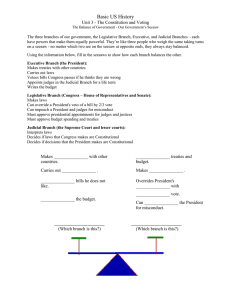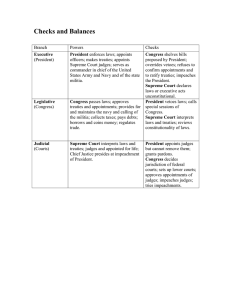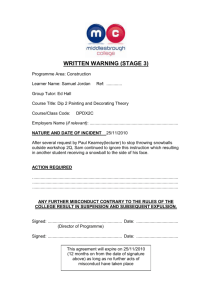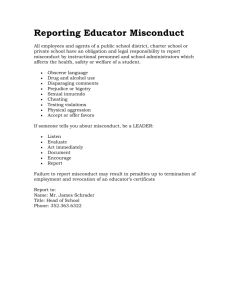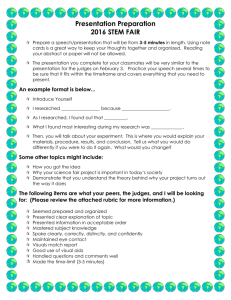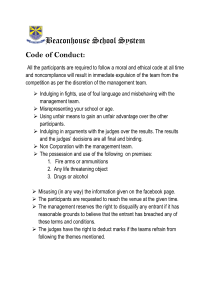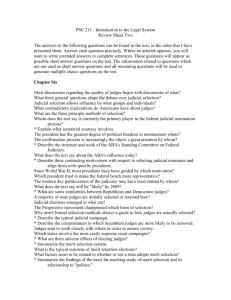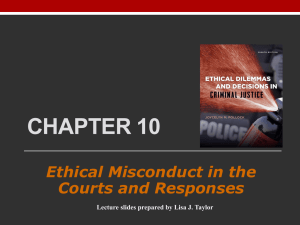The Balance of Government
advertisement
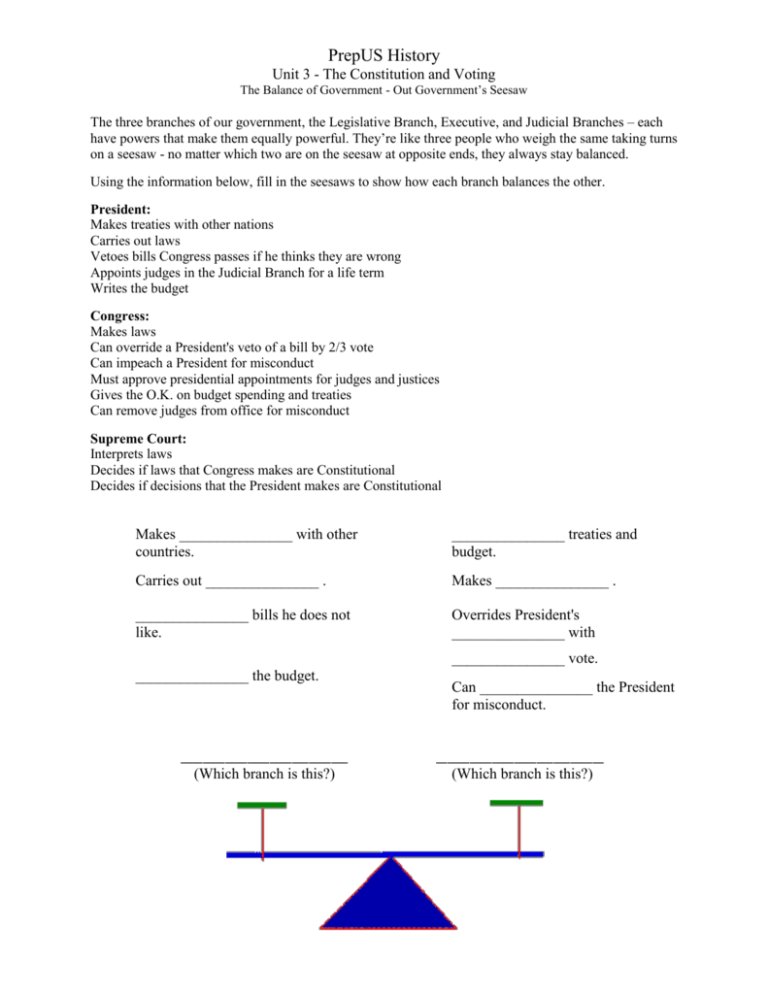
PrepUS History Unit 3 - The Constitution and Voting The Balance of Government - Out Government’s Seesaw The three branches of our government, the Legislative Branch, Executive, and Judicial Branches – each have powers that make them equally powerful. They’re like three people who weigh the same taking turns on a seesaw - no matter which two are on the seesaw at opposite ends, they always stay balanced. Using the information below, fill in the seesaws to show how each branch balances the other. President: Makes treaties with other nations Carries out laws Vetoes bills Congress passes if he thinks they are wrong Appoints judges in the Judicial Branch for a life term Writes the budget Congress: Makes laws Can override a President's veto of a bill by 2/3 vote Can impeach a President for misconduct Must approve presidential appointments for judges and justices Gives the O.K. on budget spending and treaties Can remove judges from office for misconduct Supreme Court: Interprets laws Decides if laws that Congress makes are Constitutional Decides if decisions that the President makes are Constitutional Makes _______________ with other countries. _______________ treaties and budget. Carries out _______________ . Makes _______________ . _______________ bills he does not like. Overrides President's _______________ with _______________ vote. _______________ the budget. ______________________________ (Which branch is this?) Can _______________ the President for misconduct. ______________________________ (Which branch is this?) Interprets _______________. _______________ presidential appointments for _______________. Can prove laws to be against the _______________. Can _______________ judges for misconduct. ______________________________ (Which branch is this?) ______________________________ (Which branch is this?) _______________ judges for a Can declare presidential actions _______________ term. _____________. ______________________________ (Which branch is this?) ______________________________ (Which branch is this?)
